Обеспечение антикоррозионной защиты и поддержание её высоких эксплуатационных характеристик являются одними из наиболее важных факторов, гарантирующих надёжность и длительный срок службы трубопровода. Комплексная программа мероприятий по антикоррозионной защите осуществляется на всех этапах — как производства труб, так и строительства и эксплуатации трубопроводов.
GERMETIK UNIVERSAL Group of Companies is a specialized company operating in the field of waterproofing and roofing materials, materials for the protection and restoration of buildings and structures, sealing of seams, junctions, inlets, corrosion protection of steel pipelines, materials for the construction and repair of asphalt pavements. Our company has a wide geography of sales - Ukraine, Russia, Kazakhstan, Uzbekistan, Moldova, Belarus, Armenia, Azerbaijan, Turkmenistan, Tajikistan, Georgia, Kyrgyzstan. The company works with many foreign and domestic manufacturers of products, has its own patents and specifications.
Теlephon, Viber, WhatsApp, Telegram: +38 050 617-64-77, e-mail: 7853221@gmail.comТеlephon:+38 067 857-26-62, +38 099 905-98-60, +38 098 704-59-17, +38 098 972-98-00
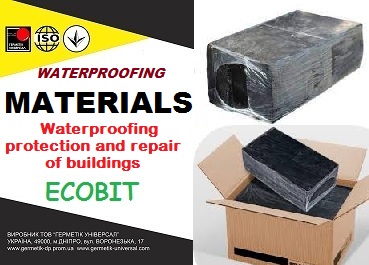
Waterproofing (from other Greek Υδωρ - water and insulation) - protection of building structures, buildings and structures from the penetration of water (anti-filtration waterproofing) or the material of structures from the harmful effects of washing or filtering water or other aggressive liquid (anti-corrosion waterproofing). Waterproofing works are called waterproofing works. Waterproofing ensures the normal operation of buildings, structures and equipment, increases their reliability
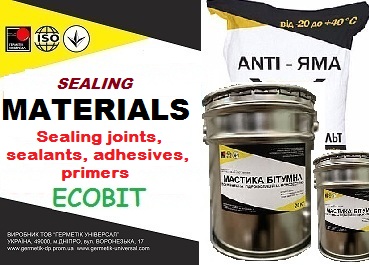
Sealing of seams is also required by such objects as prefabricated buildings, industrial hangars, warehouses. In such structures, roofing sheets are often poorly attracted to the crate, which leads to leaks. The main method of sealing seams in this case is possible by eliminating large gaps between the sheets of the structure, and then sealing the joints. Sealing seams of metal structures, materials for sealing interpanel seams, sealing seams in apartments and balconies
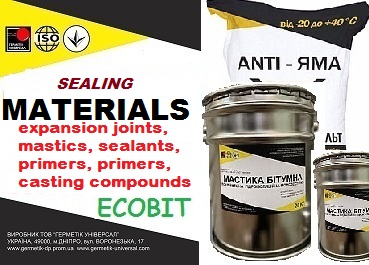
Expansion joint - designed to reduce loads on structural elements in places of possible formations arising from fluctuations in air temperature, seismic events, uneven ground settlement and other influences that can cause
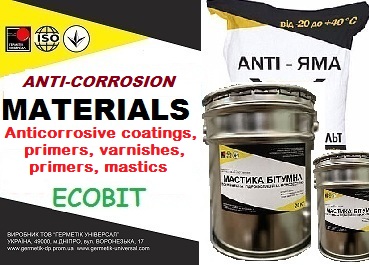
Anti-corrosion coatings refer to the protection of metal surfaces from corrosion in a high-risk (corrosive) environment. When metal surfaces are in a corrosive environment, chemical reactions usually begin with air or water.

Mastics for transport. For metal and cars, bitumen-polymer and rubber-bitumen mastics are most suitable. It perfectly protects the car, but before processing, the metal must be cleaned of dirt and rust, washed and dried. Mastic bituminous rubber is an excellent protection against decay and corrosion. Increased elasticity can be added to the properties even after application and during operation.
.jpg)
Mastics are chemical resistant. The high chemical resistance of fillers allows the use of mastics for the treatment of various surfaces. Here, not only concrete and wooden structures, pipelines for various purposes, metal structures can be added to the list. Protection against the action of acids, alkalis, gases. Protection: sulfuric acid, hydrochloric acid, nitric acid, ammonia. Gumming of technical tanks, equipment, collectors, sewer systems
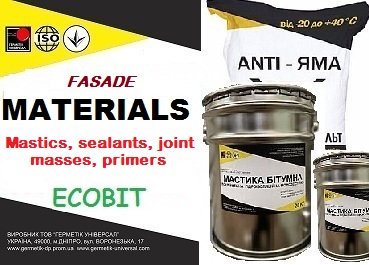
Sealing of seams is also required by such objects as prefabricated buildings, industrial hangars, warehouses. In such structures, roofing sheets are often poorly attracted to the crate, which leads to leaks. The main method of sealing seams in this case is possible by eliminating large gaps between the sheets of the structure, and then sealing the joints. Sealing seams of metal structures, materials for sealing interpanel seams, sealing seams in apartments and balconies
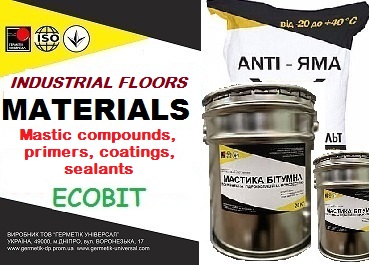
Ecobit mastics for flooring, repair and restoration. Self-leveling floor (industrial floor) is a type of floor screed using the so-called self-leveling mixtures. A feature of the self-leveling floor is the minimum possible thickness - 3.5 mm. There are at least two types of self-leveling floors: When using the right technology, the poured floor should self-level to a perfectly horizontal plane. The technology of pouring a self-leveling floor compares favorably with concreting a screed with high productivity

Ecobit mastics for roofing, repair and restoration. A roof is the topmost element of a building that is exposed to the weather. Its main function is to protect the interior from atmospheric precipitation and influences. The main requirements for the roof are lightness, durability, cost-effectiveness in manufacturing and operation. The roof consists of a carrier layer (battens, solid flooring, screeds), which is supported by the supporting structure of the roof (rafters), insulation layers (waterproofing, thermal insulation, vapor barrier) and a coating that protects the insulation from environmental influences.
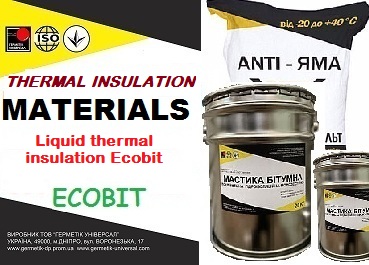
Liquid thermal insulation Ecobit is a composition of hollow microspheres made of glass, plastic or silicone, which are contained in a solution of dioxides, latex mixtures and polymers. In appearance, this is something in between, between paint and primer, having the consistency of sour cream. Liquid thermal insulation is applied by spraying, roller, brush, forms a thin (up to 1.5 mm) elastic layer on the surface, which perfectly adheres to facing materials. Liquid thermal insulation should be applied in layers, and its thickness should not exceed 0.4-0.5 mm. Complete drying of one layer of thermal insulation occurs 24 hours,
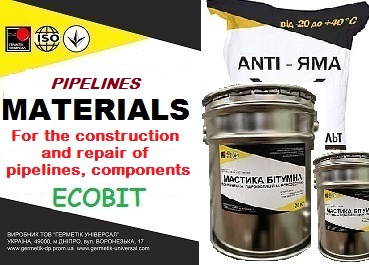
Pipeline - an engineering structure designed to transport gaseous and liquid substances, dusty and liquefied masses, as well as solid fuels and other solid substances in the form of a solution under the influence of a pressure difference in the cross sections of the pipe

Ecobit mastics for roads. Road construction (road construction) is a branch of construction involved in the design, construction, repair and maintenance of roads (highways), access roads and city streets. This concept, as a rule, includes the management, organization of work
Waterproofing (from ancient Greek Υδωρ - water and insulation) - protection of building structures, buildings and structures from the penetration of water (anti-filtration waterproofing) or building materials from the harmful effects of washing or filtering water or other aggressive liquid (anti-corrosion waterproofing). Work on waterproofing is called waterproofing work. Waterproofing ensures normal operation of buildings, structures and equipment, increases their reliability and durability. Often used in conjunction with drainage.
Waterproofing materialsFor waterproofing, waterproofing materials are used, which include:
- dry building mixtures of penetrating action (penetrating waterproofing).
Types of waterproofing
Anti-filtration waterproofing is used to protect against water penetration into underground and underwater structures (basements and recessed rooms of buildings, transport tunnels, mines, sinkholes and caissons), through retaining hydraulic structures (dams, their screens, depressions, diaphragms), as well as for protection from leakage of operational and technical water or waste water (canals, tunnels and other water conduits, pools, settling basins, reservoirs, etc.).
Anti-corrosion waterproofing is intended to protect the material of structures from chemically aggressive liquids and waters (mineralized groundwater, sea water, wastewater from industrial enterprises), from the aggressive influence of the atmosphere (above-ground metal structures, hydraulic structures in an area of variable water levels) and from electrocorrosion caused by wandering water. currents (power line supports, pipelines and other underground metal structures). Based on the type of base material, anti-corrosion waterproofing is divided into asphalt, mineral, plastic and metal; according to the method of installation - painting, plastering, pasting, casting, impregnation, injection, filling, mounting; according to the main purpose and design features - surface, keyed, working “for pressing” and “for tearing”, sealing seams and interfaces, for complex purposes (thermal and waterproofing, plastic expansion joints).
Painted waterproofing (hot and cold) is carried out in the form of a thin (up to 2 mm) multilayer coating, usually from bitumen and polymer varnishes and paints, for anti-capillary and anti-corrosion protection of reinforced concrete and metal structures. The most reliable are hot bitumen-polymer and cold epoxy-rubber coatings. New cold-curing polymer materials are increasingly being used.
Plaster waterproofing (hot and cold) is a multi-layer (up to 2 cm) coating; The most common for reinforced concrete structures are: cement shotcrete, cold and hot asphalt plaster mortars and mastics, which do not require a protective fence and allow the process of their application to be mechanized. The use of polymer concrete and polymer cement coatings and colloidal cement mortar is expanding.
Pasted waterproofing is produced by gluing roll materials in the form of a multi-layer (usually 3-4 layers) coating with mandatory protection by surface screeds and walls. Despite its wide distribution, glued waterproofing is in some cases replaced by painting and plaster waterproofing. Characterized by increased crack resistance; its improvement is proceeding along the path of using polymer films and fiberglass.
Cast waterproofing is the most reliable type of waterproofing; It is usually made from hot asphalt mastics and mortars by pouring them over a horizontal base (in 2-3 layers with a total thickness of 20-25 mm) and pouring them behind the wall or formwork on the walls (30-50 mm thick); due to complexity and high cost, it is performed in especially critical cases. Its development follows the path of using asphalt expanded clay concrete, bitumen perlite, foam epoxides and other foam plastics.
Backfill waterproofing is carried out by pouring bulk waterproofing materials into waterproof layers and cavities, for example, fenced with formwork. It is similar in design and purpose to cast waterproofing, but has a greater thickness (up to 50 cm) and a complex thermal and waterproofing purpose (hydrophobic sands and powders, asphalt insulation) with low water resistance.
Injection waterproofing (injection) A method of repairing building structures by injecting injection material under pressure to fill cracks, voids and cavities in the structure, as well as the adjacent area behind the structure to restore its strength and tightness.
Impregnation waterproofing is carried out by impregnating building products made of porous materials (concrete slabs and blocks, asbestos-cement sheets and pipes, limestone and tuff blocks) in an organic binder (bitumen, coal tar pitch, petrolatum, polymer varnishes). Impregnation waterproofing is most reliable for prefabricated elements exposed to intense mechanical stress (piles, pipes, tubings, foundation blocks).
Waterproofing is the process of making an object or structure waterproof or water-resistant so that it remains relatively unaffected by water or resisting the ingress of water under specified conditions. Such items may be used in wet environments or underwater to specified depths.
Water-resistant and waterproof often refer to resistance to penetration of water in its liquid state and possibly under pressure, whereas damp proof refers to resistance to humidity or dampness. Permeation of water vapour through a material or structure is reported as a moisture vapor transmission rate (MVTR).
The hulls of boats and ships were once waterproofed by applying tar or pitch. Modern items may be waterproofed by applying water-repellent coatings or by sealing seams with gaskets or o-rings.
Waterproofing is used in reference to building structures (such as basements, decks, or wet areas), watercraft, canvas, clothing (raincoats or waders), electronic devices and paper packaging (such as cartons for liquids).
In construction
In construction, a building or structure is waterproofed with the use of membranes and coatings to protect contents and structural integrity. The waterproofing of the building envelope in construction specifications is listed under 07 - Thermal and Moisture Protection within MasterFormat 2004, by the Construction Specifications Institute, and includes roofing and waterproofing materials.[citation needed]
In building construction, waterproofing is a fundamental aspect of creating a building envelope, which is a controlled environment. The roof covering materials, siding, foundations, and all of the various penetrations through these surfaces must be water-resistant and sometimes waterproof. Roofing materials are generally designed to be water-resistant and shed water from a sloping roof, but in some conditions, such as ice damming and on flat roofs, the roofing must be waterproof. Many types of waterproof membrane systems are available, including felt paper or tar paper with asphalt or tar to make a built-up roof, other bituminous waterproofing, ethylene propylene diene monomer EPDM rubber, hypalon, polyvinyl chloride, liquid roofing, and more.
Walls are not subjected to standing water, and the water-resistant membranes used as housewraps are designed to be porous enough to let moisture escape. Walls also have vapor barriers or air barriers. Damp proofing is another aspect of waterproofing. Masonry walls are built with a damp-proof course to prevent rising damp, and the concrete in foundations needs to be damp-proofed or waterproofed with a liquid coating, basement waterproofing membrane (even under the concrete slab floor where polyethylene sheeting is commonly used), or an additive to the concrete.
Within the waterproofing industry, below-ground waterproofing is generally divided into two areas:
- Tanking: This is waterproofing used where the below-ground structure will be sitting in the water table continuously or periodically. This causes hydrostatic pressure on both the membrane and structure and requires full encapsulation of the basement structure in a tanking membrane, under slab and walls.
- Damp proofing: This is waterproofing used where the water table is lower than the structure and there is good free-draining fill. The membrane deals with the shedding of water and the ingress of water vapor only, with no hydrostatic pressure. Generally, this incorporates a damp proof membrane (DPM) to the walls with a polythene DPM under the slab. With higher grade DPM, some protection from short-term Hydrostatic pressure can be gained by transitioning the higher quality wall DPM to the slab polythene under the footing, rather than at the footing face.
Waterproofing with two component system
In buildings using earth sheltering, too much humidity can be a potential problem, so waterproofing is critical. Water seepage can lead to mold growth, causing significant damage and air quality issues. Properly waterproofing foundation walls is required to prevent deterioration and seepage.
Another specialized area of waterproofing is rooftop decks and balconies. Waterproofing systems have become quite sophisticated and are a very specialized area. Failed waterproof decks, whether made of polymer or tile, are one of the leading causes of water damage to building structures and personal injury when they fail. Where major problems occur in the construction industry is when improper products are used for the wrong application. While the term waterproof is used for many products, each of them has a very specific area of application, and when manufacturer specifications and installation procedures are not followed, the consequences can be severe. Another factor is the impact of expansion and contraction on waterproofing systems for decks. Decks constantly move with changes in temperatures, putting stress on the waterproofing systems. One of the leading causes of waterproof deck system failures is the movement of underlying substrates (plywood) that cause too much stress on the membranes resulting in a failure of the system. While beyond the scope of this reference document, waterproofing of decks and balconies is a complex of many complimentary elements. These include the waterproofing membrane used, adequate slope-drainage, proper flashing details, and proper construction materials.
The penetrations through a building envelope must be built in a way such that water does not enter the building, such as using flashing and special fittings for pipes, vents, wires, etc. Some caulkings are durable, but many are unreliable for waterproofing.
Also, many types of geomembranes are available to control water, gases, or pollution.
From the late 1990s to the 2010s, the construction industry has had technological advances in waterproofing materials, including integral waterproofing systems and more advanced membrane materials. Integral systems such as hycrete work within the matrix of a concrete structure, giving the concrete itself a waterproof quality. There are two main types of integral waterproofing systems: the hydrophilic and the hydrophobic systems. A hydrophilic system typically uses a crystallization technology that replaces the water in the concrete with insoluble crystals. Various brands available in the market claim similar properties, but not all can react with a wide range of cement hydration by-products and thus require caution. Hydrophobic systems use concrete sealers or even fatty acids to block pores within the concrete, preventing water passage.
Sometimes the same materials used to keep water out of buildings are used to keep water in, such as a pool or pond liners.
New membrane materials seek to overcome shortcomings in older methods like polyvinyl chloride (PVC) and high-density polyethylene (HDPE). Generally, new technology in waterproof membranes relies on polymer-based materials that are very adhesive to create a seamless barrier around the outside of a structure.
Waterproofing should not be confused with roofing, since roofing cannot necessarily withstand hydrostatic head while waterproofing can.
The standards for waterproofing bathrooms in domestic construction have improved over the years, due in large part to the general tightening of building codes.
In clothing
Some garments, and tents, are designed to give greater or lesser protection against rain. For urban use raincoats and jackets are used; for outdoor activities in rough weather there is a range of hiking apparel. Typical descriptions are \\\\\\\\\\\\\\\\\\\\\\\\\\\\\\\"showerproof\\\\\\\\\\\\\\\\\\\\\\\\\\\\\\\", \\\\\\\\\\\\\\\\\\\\\\\\\\\\\\\"water resistant\\\\\\\\\\\\\\\\\\\\\\\\\\\\\\\", and waterproof\\\\\\\\\\\\\\\\\\\\\\\\\\\\\\\". These terms are not precisely defined. A showerproof garment will usually be treated with a water-resisting coating, but is not rated to resist a specific hydrostatic head. This is suitable for protection against light rain, but after a short time water will penetrate. A water-resistant garment is similar, perhaps slightly more resistant to water but also not rated to resist a specific hydrostatic head. A garment described as waterproof will have a water-repellent coating, with the seams also taped to prevent water ingress there. Better waterproof garments have a membrane lining designed to keep water out but allow trapped moisture to escape (\\\\\\\\\\\\\\\\\\\\\\\\\\\\\\\"breathability\\\\\\\\\\\\\\\\\\\\\\\\\\\\\\\")—a totally waterproof garment would retain body sweat and become clammy. Waterproof garments specify their hydrostatic rating, ranging from 1,500 for light rain, to 20,000 for heavy rain.
Waterproof garments are intended for use in weather conditions which are often windy as well as wet and are usually also wind resistant.
Footwear can also be made waterproof by using a variety of methods including but not limited to, the application of beeswax, waterproofing spray, or mink oil.
In other objects
Waterproofing methods have been implemented in many types of objects, including paper packaging, cosmetics, and more recently, consumer electronics. Electronic devices used in military and severe commercial environments are routinely conformally coated in accordance with IPC-CC-830 to resist moisture and corrosion but encapsulation is needed to become truly waterproof. Even though it is possible to find waterproof wrapping or other types of protective cases for electronic devices, a new technology enabled the release of diverse waterproof smartphones and tablets in 2013. This method is based on a special nanotechnology coating a thousand times thinner than a human hair which protects electronic equipment from damage due to the penetration of water. Several manufacturers use the nano coating method on their smartphones, tablets, and digital cameras.
A 2013 study found that nanotextured surfaces using cone forms produce highly water-repellent surfaces. These nanocone textures are superhydrophobic (extremely water-hating).
Applications
Waterproof packaging or other types of protective cases for electronic devices can be found. A new technology enabled the release of various waterproof smartphones and tablets in 2013.A study from 2013 found that nano-textured surfaces using cone shapes produce highly water-repellent surfaces. These \"nanocone\" textures are superhydrophobic.
Bituminous waterproofing systems are designed to protect residential and commercial buildings. Bitumen (asphalt or coal-tar pitch) is a material made up of organic liquids that are highly sticky, viscous, and waterproof. Systems incorporating bituminous-based substrates are sometimes used to construct roofs, in the form of \"roofing felt\" or \"roll roofing\" products.
Roofing felt
Roofing felt (similar to and often confused with tar paper, but historically made from recycled rags rather than heavy kraft paper) has been used for decades as waterproof coverings in residential and commercial roofs as an underlay(ment) (sarking) beneath other building materials, particularly roofing and siding materials, and is one type of membrane used in asphalt built up roofing (BUR) systems. Over time the felt\'s natural mesh used as a substrate for asphalt impregnation (derived from fabrics like cotton or burlap) has evolved into synthetic products performing the same function with improved durability. Other changes with time have enhanced performance, with roofing felt remaining a heavier and more durable product than tar paper.
Function
The rapid application of waterproof or water-resistant roofing underlay protects the roof deck during construction until the roofing material is applied and is required for roofs required to meet Underwriters Laboratory (UL) fire ratings. The separation of the roof covering from the roof deck protects the roof covering from resins in some sheathing materials and cushions unevenness and old nails and splinters in re-roofing applications. The underlayment also sheds any water which penetrates the roof covering from an ordinary leak, a leak from wind-driven rain or snow, wind damage to the roof covering, or ice dams. However, the application of underlays may increase the roof temperature, which is the leading cause of ageing of asphalt shingles. Not installing an underlay may void the roof covering warranty.
Weights and grades
Felt paper is available in several grades, the most common being Type 1—commonly called 15-pound (15#) or No. 15 (#15)—and Type 2—commonly called 30-pound (30#) or No. 30 (#30). The weight designations originated with organic base felt weighing 15 or 30 pounds per 100 sq. ft. (6.8 kg or 14 kg per 9.3 m2). However, modern base felts are made of lighter-weight fibre, so the weight designations, though common colloquially, are no longer literally accurate.[2]
Another basic designation is organic or inorganic. Organic felt paper has a base material made with formerly living materials such as rag fibre, hessian (burlap), or cellulose fibres (wood, or jute). Organic felt papers are now considered obsolete, having dwindled to just five percent of the market by 1987.[3] Inorganic base products are polyester, glass fibre developed in the 1950s, and historically, asbestos mat. Polyester mat is weaker and less chemically stable than fibreglass but because it is cheap is gaining market share. Polyester mat is primarily used with the more flexible modified-bitumen felt products. Asbestos mat was the first inorganic base material but was outlawed in the 1980s for health reasons but is still in use on some buildings. Inorganic felts are lighter, more tear-resistant, more fire-resistant, and do not absorb water. Another type of felt paper is perforated for use in built-up roofing and is not for use as a water-resistant underlay.
Heavier material is typically used for underlayment of longer-lived roof materials in order to match their longer life span, and on less sloped roofs, which are more susceptible to leaking. For example, two layers of No. 30 felt might be used under a slate or tile roof, whereas a single layer of No. 15 might be adequate for a steeply raked roof of 24-year asphalt shingles. s0
Manufacturing process
Roofing felt is manufactured in roll format. Rolls of base felt are pulled on rollers through large tanks of bitumen mixes until they are saturated with the tar-like bitumen mixture, producing rolls of water-resistant but breathable material.
Modified bitumen is mixed with filler components such as limestone, sand, or polymers such as atactic polypropylene (APP) that gives rigidity and tear resistance or styrene-butadiene styrene (SBS), a rubber additive that gives more elastic benefits.
Felt paper standards
The American Society for Testing Materials (ASTM) standards that apply to felt paper are:
- ASTM D226 / D226M Standard — 09: Specification for Asphalt-Saturated Organic Felt Used in Roofing and Waterproofing.
- Type I - #15 or 15 lb. perforated or non-perforated
- Type II - #30 or 30 lb. perforated or non-perforated
- ASTM D4869 / D4869M Standard — Specification for Asphalt-Saturated Organic Felt Underlayment Used in Steep Slope Roofing. ASTM 4869-03 now includes the non-perforated felt referred to in ASTM D226-97a which will be phased out. ASTM 4869-03 includes a liquid-water transmission test (shower test) and dimensional stability limits (wrinkling) which ASTM D226-97a does not include.[7]
- Type 1 - #8. Formerly ASTM D4869-93 Type I
- Type 2 - #13. Formerly ASTM D226-97a Type I (No. 15)
- Type 3 - #20. Formerly ASTM D4869-93 Type II
- Type 4 - #26. Formerly ASTM D226-97a Type II (No. 30)
- ASTM D2178 / D2178M-15a Standard — Specification for Asphalt Glass Felt Used in Roofing and Waterproofing.
- Type IV has a 44-pound breaking strength
- Type VI has a 66-pound breaking strength
- ASTM D6757 / D6757M-16a Standard — Specification for Underlayment Felt Containing Inorganic Fibres Used in Steep-Slope Roofing.
- ASTM D6222 / D6222M-16 Standard — Specification for Atactic Polypropylene (APP) Modified Bituminous Sheet Materials Using Polyester Reinforcements.
- Type 1
- Type 2
- Grade G, surface coated granules
- Grade S, smooth surface (uncoated)
The Canadian Standards Association standards are:
- CSA A123.3 Asphalt Saturated Organic Roofing Felt
Roll roofing components
Roll roofing is a bitumen product similar to asphalt shingles meant for direct exposure to the weather. To protect its asphaltic base from ultraviolet degradation mineral granules are added on top of the felt, also decreasing the product\'s fire vulnerability. Thin, removable transparent film is added to the base of rolled roofing during manufacturing on all torch-on products. This stops the felt from sticking to the mineral layer when rolled up during the packaging process. A similar removable membrane on self-adhesive rolled roofing separates the adhesive from the mineral layer. Torch-on roofing felt also receives a removable membrane to keep it from sticking to itself prior to application.
Irritants
The complex chemical composition of bitumen makes it difficult to identify the specific component(s) responsible for adverse health effects observed in exposed workers. Known carcinogens have been found in bitumen fumes generated at work sites. Observations of acute irritation in workers from airborne and dermal exposures to fumes and aerosols and the potential for chronic health effects, including cancer, warrant continued diligence in the control of exposures.
Reasons to use a roofing underlayment
- It protects the roof deck from rain before the roofing is installed.
- It provides an extra weather barrier in case of blow offs or water penetration through the roofing or flashings.
- It protects the roofing from any resins that bleed out of the sheathing.
- It helps prevent unevenness in the roof sheathing from telegraphing through the shingles.
- It is usually required for the UL fire rating to apply (since shingles are usually tested with underlayment).
Negative aspects
- Bitumen is mostly produced from crude oil and is not regarded as a sustainable building product
- Bitumen is combustible
- Exposure to extreme heat and UV radiation drastically decreases the lifespan
- The fumes that are produced during hot application of asphalt or tar can cause dermal and respiratory problems
- Some felt paper installed on existing buildings may contain asbestos, which has a carcinogenic risk if its dust is inhaled.
Malthoid
From 1905 to 1988, The Paraffine Paint Co. of San Francisco had Malthoid as a trademark for waterproof and weatherproof building and roofing materials made of paper and felt in whole or in part. However, it had become well known before that.[ About 1913, Paraffine promoted its Malthoid roofing materials with a 16-page booklet. In 1941, the Duroid Company began making Malthoid in Onehunga, New Zealand.
Malthoid was once common enough to be used as a generic description of flat roofing material in New Zealand and South Africa (item 26). A description of a New Zealand house built about 1914 says it was,\"built of timber framework. covered by sheets of asbestos. The roof was closely timbered, then covered by strips of Malthoid paper. This was then painted with tar and topped off with a sprinkling of sand.\"[ Railway vehicles in Australia were roofed with Malthoid. Malthoid is still available for flat roofs and damp courses
Butyl rubber, sometimes just called \"butyl\", is a synthetic rubber, a copolymer of isobutylene with isoprene. The abbreviation IIR stands for isobutylene isoprene rubber. Polyisobutylene, also known as\"PIB\" or polyisobutene, (C4H8)n, is the homopolymer of isobutylene, or 2-methyl-1-propene, on which butyl rubber is based. Butyl rubber is produced by polymerization of about 98% of isobutylene with about 2% of isoprene. Structurally, polyisobutylene resembles polypropylene, but has two methyl groups substituted on every other carbon atom, rather than one. Polyisobutylene is a colorless to light yellow viscoelastic material. It is generally odorless and tasteless, though it may exhibit a slight characteristic odor.
Properties
Butyl rubber has excellent impermeability to gas diffusion, and the long polyisobutylene segments of its polymer chains give it good flex properties.
The formula for PIB is: –(–CH2–C(CH3)2–)n–
It can be made from the monomer isobutylene (CH2=C(CH3)2) only via cationic addition polymerization.
A synthetic rubber, or elastomer, butyl rubber is impermeable to air and used in many applications requiring an airtight rubber. Polyisobutylene and butyl rubber are used in the manufacture of adhesives, agricultural chemicals, fiber optic compounds, ball bladders, O-rings, caulks and sealants, cling film, electrical fluids, lubricants (2 stroke engine oil), paper and pulp, personal care products, pigment concentrates, for rubber and polymer modification, for protecting and sealing certain equipment for use in areas where chemical weapons are present, as a gasoline/diesel fuel additive, and chewing gum. The first major application of butyl rubber was tire inner tubes. This remains an important segment of its market even today.
History
Isobutylene was discovered by Michael Faraday in 1825. Polyisobutylene (PIB) was first developed by the BASF unit of IG Farben in 1931 using a boron trifluoride catalyst at low temperatures and sold under the trade name Oppanol B. PIB remains a core business for BASF to this day.
It was later developed into butyl rubber in 1937, by researchers William J. Sparks and Robert M. Thomas, at Standard Oil of New Jersey\'s Linden, N.J., laboratory. Today, the majority of the global supply of butyl rubber is produced by two companies, ExxonMobil (one of the descendants of Standard Oil) and Polymer Corporation, a Canadian federal crown corporation established in 1942 to produce artificial rubber to substitute for overseas supply cut off by World War II. It was renamed Polysar in 1976 and the rubber component became a subsidiary, Polysar Rubber Corp. The company was privatized in 1988 with its sale to NOVA Corp which, in turn, sold Polysar Rubber in 1990 to Bayer AG of Germany. In 2005 Bayer AG spun off chemical divisions, including most of the Sarnia site, creating LANXESS AG, also of Germany.
PIB homopolymers of high molecular weight (100,000–400,000 or more) are polyolefin elastomers: tough extensible rubber-like materials over a wide temperature range; with low density (0.913–0.920), low permeability and excellent electrical properties.
In the 1950s and 1960s, halogenated butyl rubber (halobutyl) was developed, in its chlorinated (chl





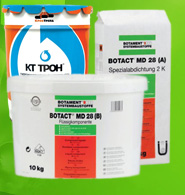

 Ukraine
Ukraine Kazakhstan
Kazakhstan Belorussia
Belorussia Moldova
Moldova Russia
Russia Uzbekistan
Uzbekistan Azerbaijan
Azerbaijan Armenia
Armenia Georgia
Georgia Kyrgyzstan
Kyrgyzstan Turkmenistan
Turkmenistan Tajikistan
Tajikistan Poland
Poland Hungary
Hungary Romania
Romania Bulgaria
Bulgaria Czech
Czech Slovenia
Slovenia Slovakia
Slovakia Serbia
Serbia Croatia
Croatia Montenegro
Montenegro Bosnia
Bosnia Estonia
Estonia Latvia
Latvia Lithuania
Lithuania